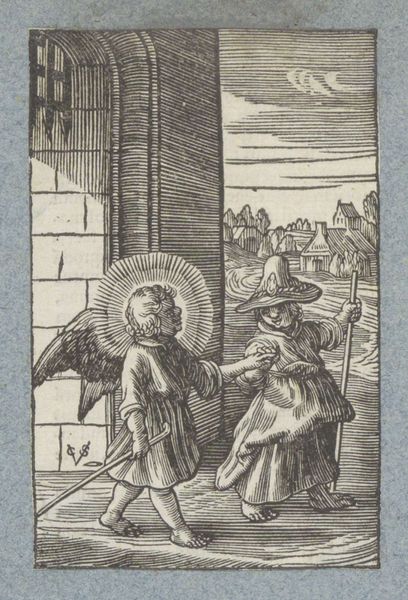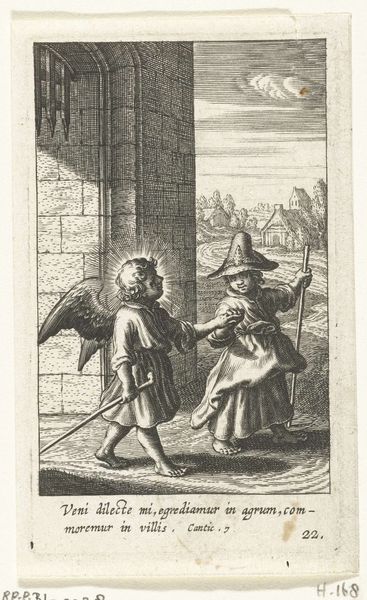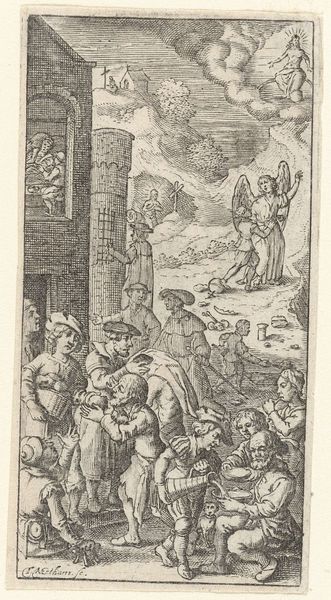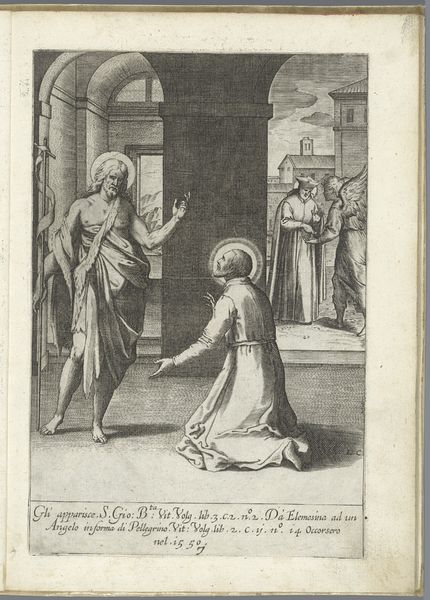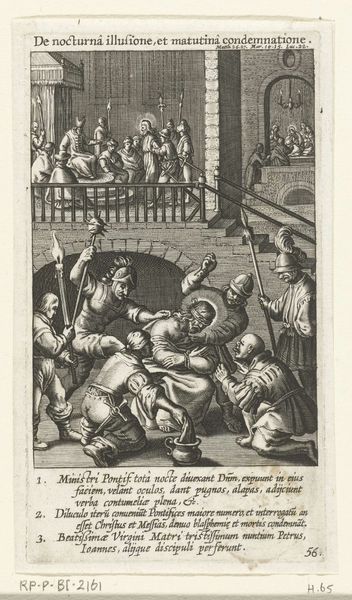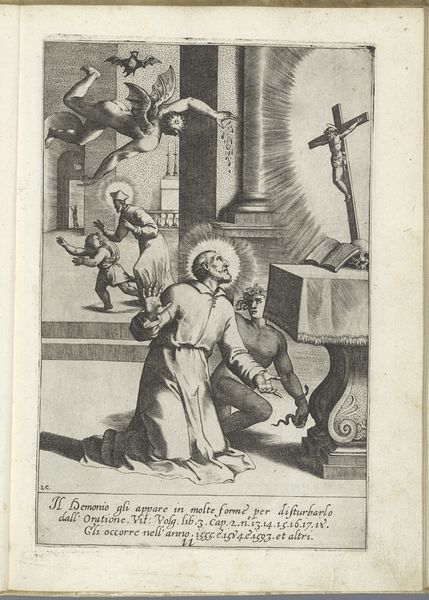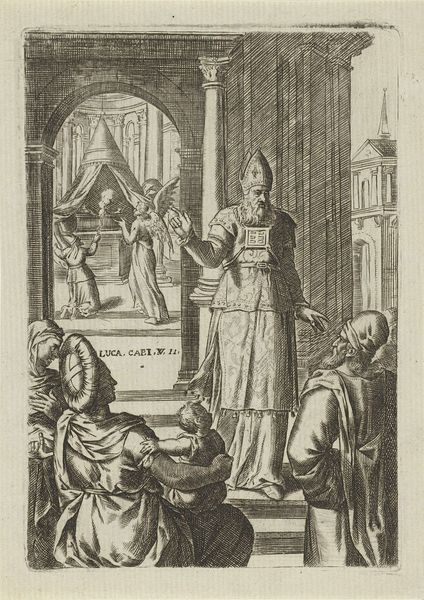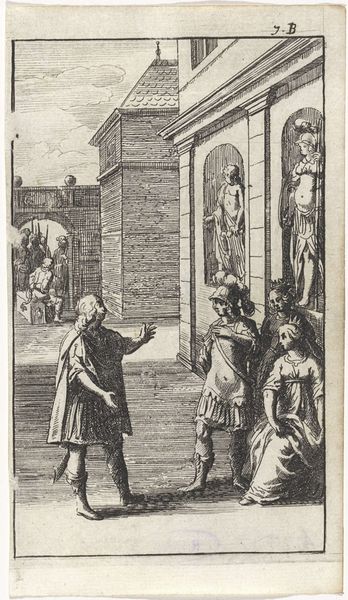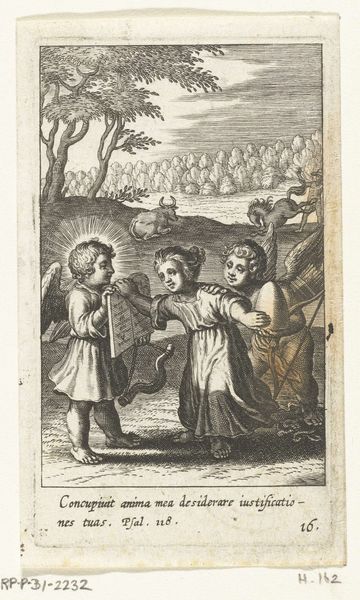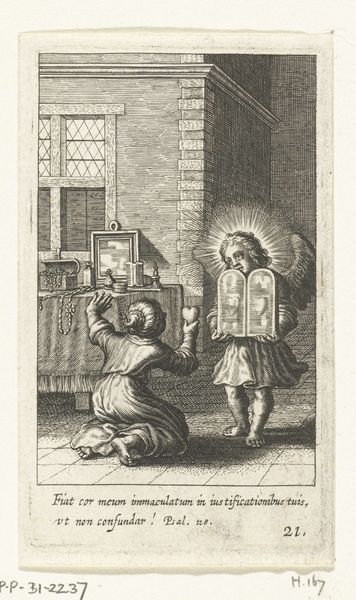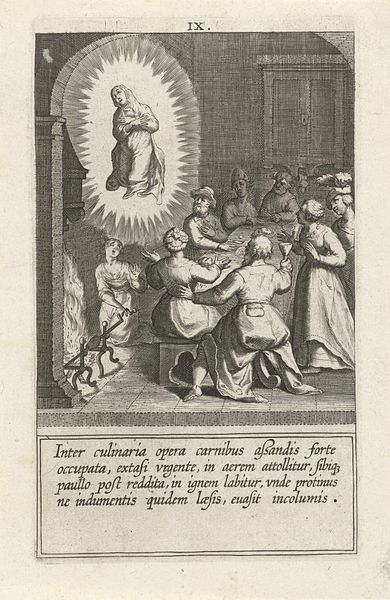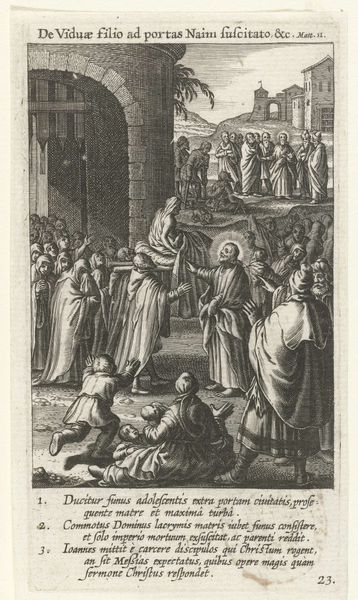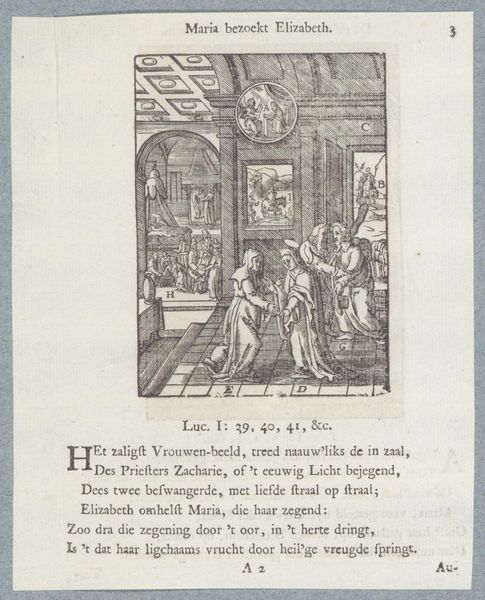
Veni dilecte mi, egrediamur in agrum, commoremur in villis 1628
0:00
0:00
drawing, print, paper, ink, pen, engraving
#
drawing
# print
#
old engraving style
#
figuration
#
paper
#
ink
#
pen-ink sketch
#
pen
#
northern-renaissance
#
engraving
Dimensions: height 112 mm, width 72 mm
Copyright: Rijks Museum: Open Domain
Christoffel van Sichem II created this woodcut, now at the Rijksmuseum, sometime before his death in 1658. The composition divides into a dark, enclosed space on the left and an open, sunlit landscape on the right. Note the angel figure, its body rendered with close, parallel lines to create shadow and form. The angel leads a figure from the dark confines of a brick doorway towards a rustic scene of rolling hills and simple buildings. This is a symbolic journey. The semiotic structure here opposes confinement and liberation. The contrast between the textures—rough brick versus open space—invites a reading where the material and the immaterial intersect. Consider the lines that define the angel's halo, radiating outwards, contrasting with the linear, almost claustrophobic, hatching of the doorway. The text below, "Veni dilecte mi, egrediamur in agrum, commoremur in villis," reinforces this sense of invitation and escape. The stark formal qualities of the woodcut enhance its metaphorical potency. The interplay of light and shadow reflects ongoing debates about perception, truth, and representation.
Comments
No comments
Be the first to comment and join the conversation on the ultimate creative platform.
